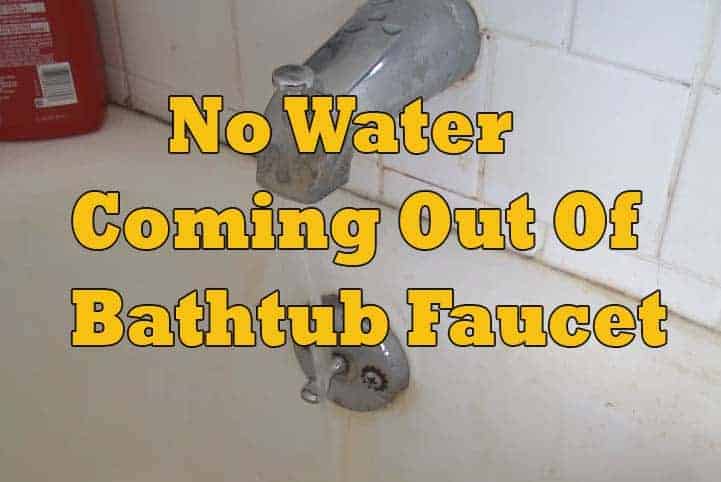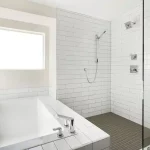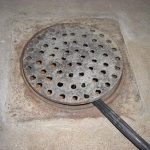Are you tired of experiencing slow or water not coming out of bathtub, faucet, or shower? If so, you’re not alone. There are many reasons why your water flow may be disrupted, including unpaid bills, leaks in the water supply line, or blockages caused by debris and grime.
Fortunately, you don’t need to call a plumber to solve these issues. With some simple DIY projects, you can troubleshoot and fix these problems yourself, saving you time and money. In this article, we’ll provide you with some tips and tricks to help you restore your water flow and enjoy a relaxing bath or shower whenever you want.
No Water Coming Out Of Bathtub Faucet and Shower: The Reasons Explained
If you are experiencing no water coming out of your bathtub faucet and shower, there could be several reasons for it. In this section, we will explore the possible causes of the problem and provide solutions to fix it.
Inspect the shower and faucet of your home
When you notice no water delivery from the shower and bathtub faucet in your bathroom, the problem might be with the main water supply line of your home. To check this, you should inspect the other faucets in your home to see if water runs through them. If you see no water running from any or most taps of your house, the problem could be with your main water supply line. Leakage in the main water supply line, pooling water signs, and recent signs of water damage around the ceilings or walls are some of the things you should look for first.
If you see such issues, you should call for a plumber to inspect it closely. Once the plumber can detect the exact issue, you can start fixing it. If you see water running perfectly through the other faucets at home, you should turn on the hot water faucet. If you see hot water not coming out of it, the problem is probably with the water heater. If it is also working properly, you need to step further and find the possible problem of water not running off the bathtub faucet and shower.
Inspect the water flow valve
When you see all faucets in your home running properly except the shower and faucets in your bathroom, you need to look at the faucet and its water flow valve for possible problems. Possibly something has blocked the faucet’s water supply valve, and so, it has stopped working. At times, someone may have accidentally turned off the valve, and so, you would see water not coming out of the faucet.
To inspect the valve, you need to locate it first. You should find it right under the sink of your bathroom. The water flow valve may sometimes be located in the basement, underneath the bathroom. Once you locate the valve, see if it is turned off or not. If it is switched off, turn it on, and you should see water running through the shower and bathtub faucet.
If water doesn’t run into the faucet and shower even after turning off the valve, the water supply line of your bathroom may be leaky. Then, you need to fix it. Also, at times, the knob of the bathroom water supply line can be turned off occasionally. You should check it and turn on the knob to ensure that the supply line is working appropriately.
Check the showerhead of the bathroom:
When you find that the water supply line and flow valve are working appropriately, the problem might be with the showerhead of the bathroom. At times, rust build-up and mineral deposits might block the showerhead so water won’t run through the shower.
To inspect the showerhead, you need to pry it off the shower pipe. You can do it by twisting the showerhead against the shower pipe. At times, rust and residual build-up around the showerhead might stop it from moving as it gets stuck. You should drape the stuck showerhead with an old piece of cloth and twist it to pry it off safely.
If it still doesn’t come off, you can use a wrench to remove the showerhead with further inconveniences. Once you have removed the showerhead, inspect its inside and the attached pipe.
Hard water residue:
Many regions have excessive hard water, and over the period, it might stop the bathroom faucet from working properly. Since hard water contains multiple minerals in high amounts, it gradually develops residues around the showerhead and bathtub faucet. Thus, the faucet gets blocked, and you won’t see water running through it.
What’s more, hard water residues will develop around the hot water side of the faucet than the cold waterside. It happens because minerals usually react with hot water more than cold water. The mineral deposit develops gradually and restricts the water flow. When you don’t treat the hard water residual development for a long time, it will finally block the water flow, and you will see no water coming out of your bathtub faucet. To fix this, you need to clean the showerhead and bathtub faucet regularly or install a water softener to remove the excessive minerals from the water.
In conclusion, no water coming out of the bathtub faucet and shower can be a frustrating experience. However, by following the steps mentioned above, you can diagnose the issue and fix it accordingly.
How to Fix a Faucet with No Water Coming Out
If you turn on your bathtub faucet and no water comes out, there may be a problem with the faucet or the water supply. Here are the steps to diagnose and fix the issue:
- Shut off the main water supply and valve to prevent overflow and disconnect the hot and cold water supply valves for safety.
- Pry off the faceplate of the faucet using a screwdriver and remove the nuts that hold the faucet against the bathtub.
- Check for any sediment build-up or clogging in the faucet and clean it off properly using vinegar or a mineral deposit remover.
- If the faucet is still not working, check the diverter valve and cartridge for any damage or clogging.
- Reassemble the faucet and turn on the main water supply to test if the faucet is working properly.
If the above steps do not solve the issue, there may be a problem with the plumbing system or hot water pipes. In this case, it may be necessary to call a professional plumber to diagnose and fix the problem.
Final Words
In conclusion, fixing a lack of water flow in your bathtub faucet and shower is a relatively easy task that you can do yourself. Firstly, inspect the home water supply line to ensure there are no leaks or issues. Next, check the showerhead and faucet for any build-up of hard water or grime, which can be quickly fixed. If there are any leaks in the main water supply line, it is recommended to consult a professional plumber.




